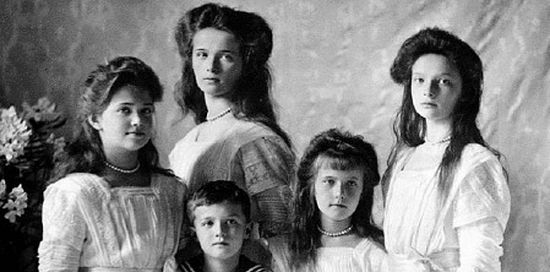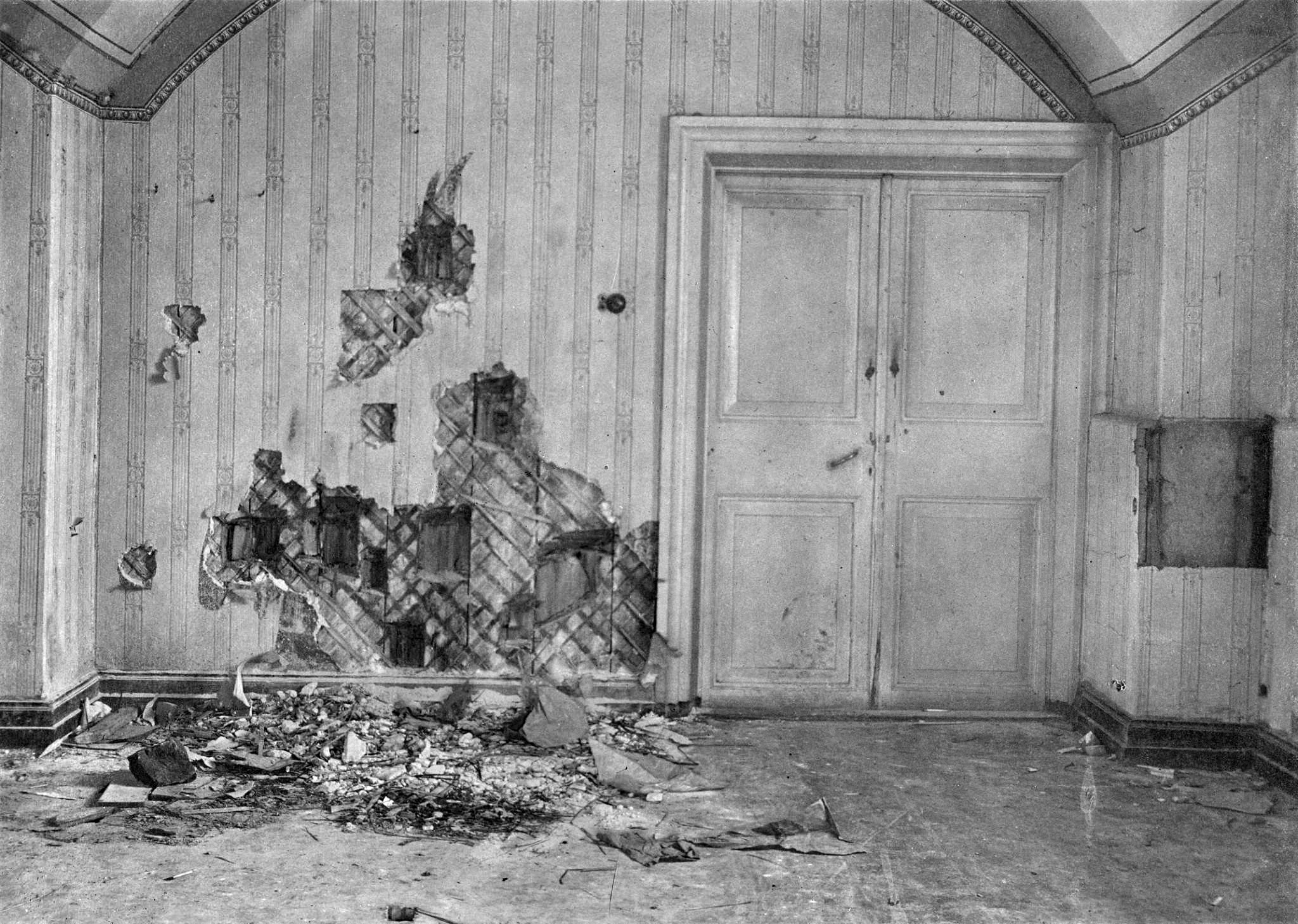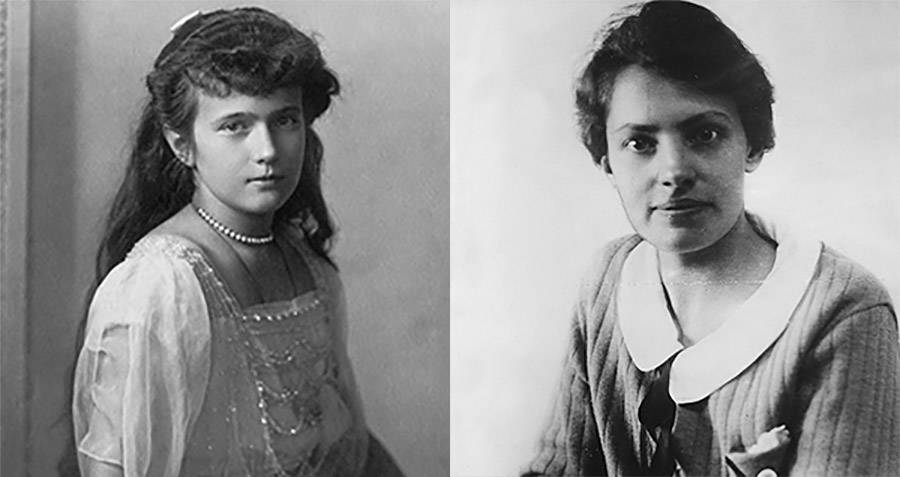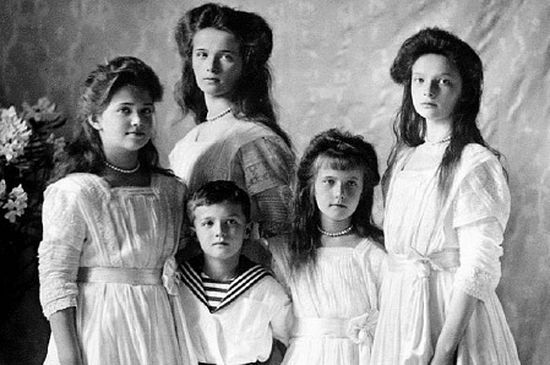In March 1917 Nicholas Romanov, Emperor of Russia abdicated the Imperial throne giving the country’s political power to a provisionally formed Bolshevik government. The Tsar and his family were placed under house arrest while the government decided what to do with them. The family were moved around while plans were made for their future, the most likely option being exile. Ultimately, the plans were abandoned in favour of a secret execution which took place on the night of 16th July 1918.
The manner of the execution and the confusion that followed, meant that the fate of the Romanov family was largely unknown for decades. It was accepted that Tsar Nicholas and his wife, Alexandra of Hesse, had been executed by the Bolsheviks but what had happened to their five children was less clear. In the aftermath of the Russian revolution and to this day, individuals have come forward presenting themselves as the surviving Romanov children. At various points there have been more pretenders than there were Romanovs.
The various Romanov claimants have presented themselves as such for a variety of reasons, and to varying degrees of success. We now know beyond reasonable doubt that the Tsar and his entire family were executed together with no survivors but this is a relatively recent discovery that has only been confirmed almost a hundred years after the event. With an absence of identifiable remains and so much confusion and mystery regarding the events of the execution it’s not all that surprising that as many people claimed to be of the Romanovs. What is surprising however, is how some of them managed to do so successfully. The Romanovs were one of the most photographed families in the world but beyond managing to convince their supporters that they were who they claimed to be, in some instances, they actually managed to convince the surviving Romanovs and members of the Imperial household.
A/N: This post refers to those claiming to be surviving Romanovs as ‘pretenders’. It does so because the remains of the Romanovs have been found and identified beyond reasonable doubt. It isn’t said as an observation or comment on the character of the people, nor as a condemnation of them and/or their possible motives.
The Execution
CW: Graphic descriptions of violence. If you’d rather not read it, you can skip to the next section [ Aftermath, Rumours of Survival, and the First Pretenders ] in the knowledge that the Tsar and his family were most certainly executed.
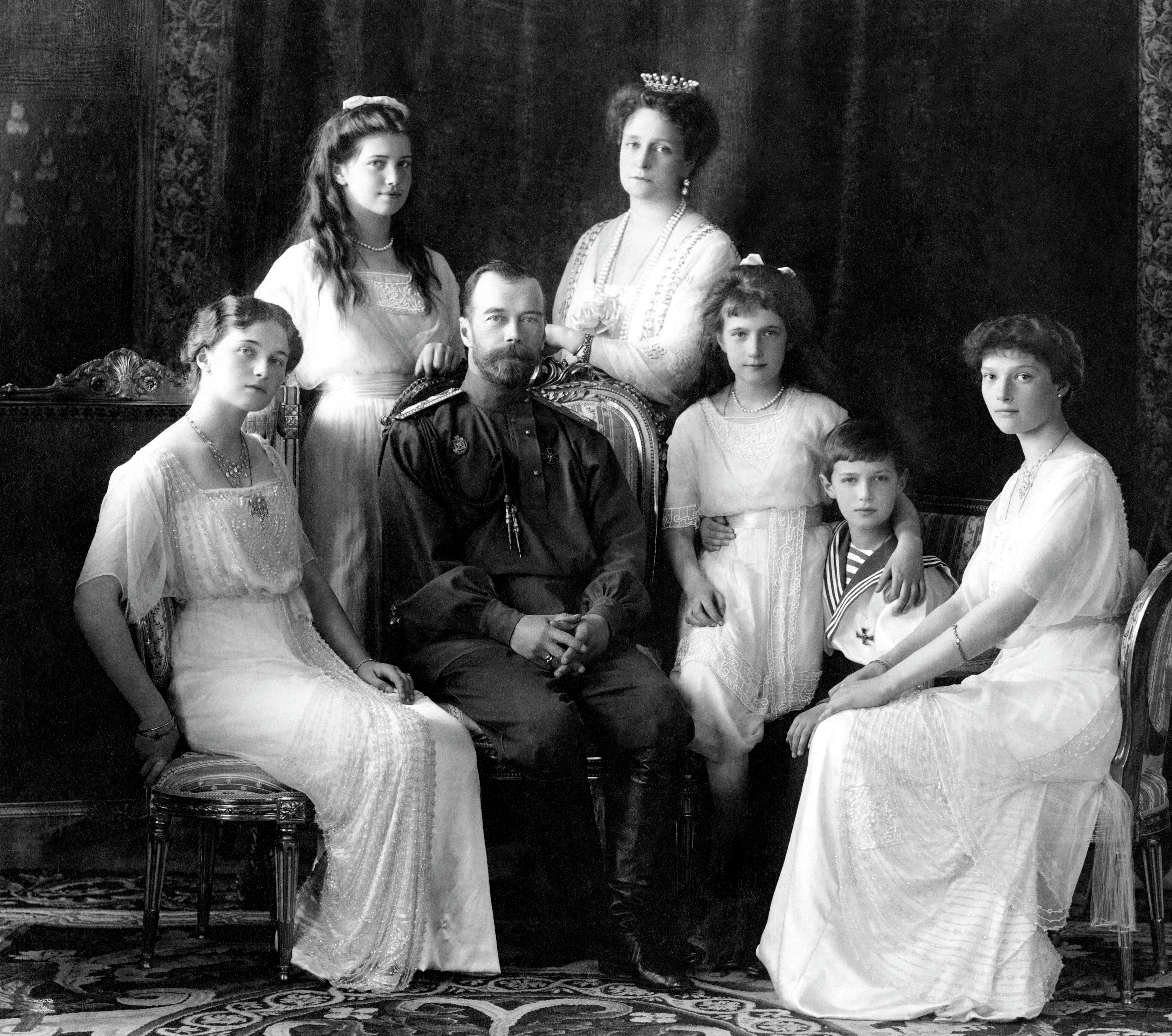
On the 30th April 1918, the Imperial family was moved to a house on the outskirts of the city of Yekaterinburg. The Tsar had abdicated the year before but there remained the threat of restoration from loyalists, and members of the family that had escaped the Bolsheviks. Under increasingly strict regulations, the family were allowed to keep only a small number of attendants and weren’t able to live in the manner to which they’d been accustomed. By the end of June, the Bolshevik government had agreed that the Tsar and his family were to be executed in order to stem the attempts to restore the monarchy. At the time, the fighting was so close to Yekaterinburg that the Imperial family could hear the gunshots from their house arrest. Liberation was potentially imminent.
The execution occurred in the early hours of the morning on the 17th July. Around midnight, the commandant in charge of the family, Yakov Yurovsky, went to the Tsar’s physician and told him that the family needed to be moved and would need to prepare immediately. The family and their four attendants (including the doctor) took half an hour to dress before they were escorted into a basement room where they were told to wait for their transportation. The Tsar asked for chairs to be brought for his wife and son, which was allowed.
In the basement were Tsar Nicholas (50), his wife, Alix (46), their children; Alexei the Tsarevich (13) and the Grand Duchesses Olga (22), Tatiana (21), Maria (19), and Anastasia (17). Their retinue consisted of their cook, Ivan Kharitonov (46), their footman, Alexei Trupp (62), the physician Eugene Botkin (53), and Alexandra’s maid Anna Demidova (40).
Just a few minutes after the chairs had been brought, Yurovsky returned with a small execution squad. He briefly announced that the family were to be executed, an order which he repeated before shooting the Tsar in the chest. The other men opened fire and the Tsarina was shot in the head, while the four attendants were killed. The scene quickly became chaotic. The smoke from the guns and the debris from the room obscured the vision of the execution squad, while the noise meant that they couldn’t properly hear commands.
Outside, one of the guards was positioned so that he could monitor the noise level from the house. To disguise the sounds of the execution, the engine of the vehicle the family had believed would be their transportation was left running, however this did little to dull the noise. He quickly ran to the basement to inform Yurovsky that the shooting had woken up several nearby households, that the barking of the Romanov dogs had also contributed, and that they should stop shooting in favour of using bayonets. The shooting had to stop anyway, as the room was now dangerously filled with smoke. As the basement was given the chance to clear, the executioners discovered that the Tsar’s children and Botkin had survived the initial assault.
In the hopes that they would eventually be free of their captors, all of the children had sewn a great deal of their jewels into their undergarments, and in the Tsarevich’s case, his cap. The jewels impeded the bullets but also hindered the attack which followed with bayonets. With the smoke cleared, the executioners killed Botkin before turning their attention to Alexei, who was still sitting in the chair that had been acquired for him. An entire magazine clip was emptied into him but his jewelled clothes continued to protect him. When bullets failed, he was stabbed before Yurovsky approached him and shot him in the back of the head twice. Regardless of the killing blow, Alexei suffered from severe haemophilia which had seen his life threatened from mere bruises, so it is impossible to think he might have survived.
The Tsar’s four daughters were still alive and crouched against the back wall. Yurovsky and another approached Olga and Tatiana who were holding each other and screaming for their mother. Like their brother, they survived a round of bayonetting but when they tried to stand together, they too were shot in the head. First, Tatiana and then Olga. At some point during this, the maid, Anna, regained consciousness having fainted from her wounds but not died from them. Realizing she was alive, she started shouting praises to God for her survival which naturally drew the attention of the execution squad. She tried to defend herself with pillows that also had jewels sewn into them but to little avail. She was stabbed by bayonets and died.
That left Maria and Anastasia though the exact circumstances of their deaths are unknown. Maria had been injured when she received a bullet wound to the thigh as she attempted to escape during the volley that killed her parents. One of the executioners claimed that after bayonetting failed, he shot Maria in the back of the head but no bullet wound was found on the remains believed to be Maria’s. The same executioner claimed that he had killed Anastasia by bayonetting her face. As the bodies were taken out to the waiting vehicle, Anastasia, Maria, or both, regained consciousness and began screaming. They were once again clubbed and bayonetted until dead.
In all, the execution took between twenty and thirty minutes. In the aftermath, the bodies were stripped, mutilated, disfigured, and burned with both fire and acid. The initial burial site proved too shallow, and so the bodies were recovered within a matter of days and relocated. They were buried en route to the second burial site, in graves dug by Yurovsky’s men. The Tsarevich and one of his sisters were separated from the main grave in the hopes of confusing anyone who would stumble upon it and, in finding only nine bodies, would dismiss it as the remains of the family. Once again, the bodies were doused in acid as they were buried. Alexei and his sister were burned and their bones shattered under rifle butts before finally thrown into a grave.
Aftermath, Rumours of Survival, and the First Pretenders
The Soviet government announced that the Tsar had been killed but didn’t offer any information as to what had happened to his family. The bodies were not discovered until the 1970s, reburied for political reasons and exhumed again in the 1990s for identification and reburial. The remains of Alexei and his sister (now considered to be Maria) were not discovered until 2007. This left plenty of unanswered questions in the years following the revolution and the deliberate misinformation spread by the government cultivated an air of mystery around the event.
The Tsar was the only one known to be dead until stories began circulating that his family had been executed with him. Given the mystery surrounding the whole affair, it didn’t take long for rumours to spread that a Romanov might have survived. There were stories of sympathetic guards who took pity on a potential survivor. The executioners had left the bodies unattended for some time giving a potential survivor the chance to feign death until they could escape. As early as 1919 two women presented themselves at a church claiming to be the Grand Duchesses Anastasia and Maria. The two women in question were relatively unknown as pretenders given that they never sought publicity for their claim. They lived as part of a religious community and were buried under the names Anastasia and Maria Nikolaevna.
The first of the pretenders was Eugene Ivanoff who became known in 1927 after claiming to be the Tsarevich. Ivanoff’s story began with him escaping the massacre of his family in the company of a sympathetic Cossack soldier. Together, they fled to Germany before they ended up in Poland where Ivanoff attracted media attention. One priest said that of all the Tsarevichs he had sheltered, Ivanoff was “the most authentic.” This suggests that while Ivanoff may have been the first to have been noted by a wider audience, such pretension was common.
Ivanoff spoke fluent English, German, French, and Russian. He was well dressed, well spoken, and could apparently recall intimate details of the Imperial court. He was well versed in the practices and hobbies Alexei had picked up during his periods of convalescing with haemophilia. Ivanoff was also a haemophiliac which added legitimacy to his story. He lived as a guest of various Russian emigres though he did not maintain the attention of the media and assumedly lived quietly with those convinced of his identity.
Anastasia and the Media
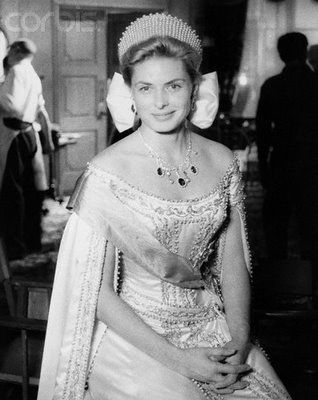
Of all the Romanovs, it was the fate of Anastasia that captured the public imagination and became one of the most celebrated mysteries of the twentieth century. There were as many pretenders claiming to be the other Romanov children but it’s the name Anastasia that the general public tend to recall. Her fame is in part to a self-fulfilling prophecy. Some of Anastasia’s pretenders were extremely vocal about their identity (more on that later), with some going as far as to demand legal recognition that they were the surviving Grand Duchess. Their presence in the media with stories of escaping the execution, attempting to reunite with her surviving family inspired Hollywood, which in turn gave the story greater publicity, which inspired more women to come forward and claim they were Anastasia.
The first film about Anastasia was shown in 1928, showing Anastasia surviving the execution with the help of a revolutionary. The two reunite in America where Anastasia is attempting to become an actress and the film ends with their marriage. The most famous of the films are Anastasia (1956) and Anastasia (1997), the latter inspired by the former. The common themes of both films are a young Anastasia surviving the revolution that kills her family, but losing her memory in the process. She is discovered as a young adult as having a remarkable likeness of the lost Anastasia and is coached into posing as the lost duchess in order to gain money. The plan goes to plan until faced with Anastasia’s grandmother, the Empress Dowager Maria Feodorovna who has seen too many woman coached by scam artists into pretending they’re Anastasia to accept another one. At this point, Anastasia recalls something that only she could know and the Empress Dowager is united with her granddaughter.

While these films have little basis in actual history (tiaras aside, we know that Anastasia did not survive, and the Empress Dowager didn’t meet with any potential claimants) the initial storyline (taken from a play written in 1952) draws from several real events. Firstly, there is obviously the rumour that Anastasia survived. The 1997 film shows Anastasia and her grandmother being saved by a servant boy in the palace which was a frequent theme in the “survivors” accounts. The Empress Dowager refers to conmen training young girls to pose as Anastasia which was again, true. Several young girls were taken in by gentlemen hoping to present her as the surviving Grand Duchess in the hope of either a reward from the Empress Dowager, a cut of the Tsar’s lost treasure which was assumed to exist in bank accounts waiting to be claimed by a Romanov survivor, or acclaim if Anastasia was recognised, accepted and restored as the rightful heir of the Romanov dynasty. The 1997 film also shows Anastasia and her grandmother attempting to escape Russia on a train with the latter succeeding. This is probably based on an alleged sighting of Anastasia and her sisters at a train station in September of 1918 where the woman in question claimed to be Anastasia, escaping her captors but was injured in the process.
In her life, the Empress Dowager refused to accept that her son and his family had been murdered, though those closest to her believed that inwardly she knew the truth. She didn’t meet with any of the Romanov claimants personally, but in Anastasia (1956) her fictional counterpart makes the rather astute observation:
“I have received too many appeals from resurrected Romanovs. The firing squad was such poor shots, it’s amazing the revolution succeeded.”
Anna Anderson
The most famous (or infamous, depending on your perspective) of the Romanov imposters was Anna Anderson. Her insistence that she was the surviving Grand Duchess Anastasia split the surviving Imperial Family, and her determination for legal recognition as the Tsar’s daughter sparked one of the longest court cases in German history.
While Anastasia’s story ends in Yeketerinburg in 1918, Anderson’s begins in 1920 when an anonymous woman was admitted to a German mental hospital after attempting to commit suicide in a Berlin river. Unable or unwilling to speak, she was referred to as ‘Miss Unknown’ and remained at the hospital for two years. While nothing could be discerned of her origins, staff noted that when she spoke it was with a Russian accent, and her body showed signs of injury and scars. In 1922 another patient identified Anderson as the Grand Duchess Tatiana. Upon her release, she convinced a prominent émigré to visit the woman. He did and also believed her to be Tatiana. He then invited others to visit her including members of the Imperial extended family. It was only when Sophie Buxhoeveden (remember her, she comes up again), a former maid to the Tsarina visited and denied that she was who she claimed to be that Anderson announced that she had never claimed to be Tatiana.
From this point, Anderson began to be known as Anastasia, gathering support from several of those who had believed her to be Tatiana, and an increasing number of supporters within the Imperial family and the Russian émigrés. Her story of escape what particularly fantastical, something which even her most ardent champions had to admit. She claimed that after she’d been shot, two brothers by the name of Tchaikovsky had taken her from the basement and realized that she was still alive. The brothers hid her from the execution squad, loaded her onto a farm cart and smuggled her into Romania. There, she married one of the brothers and together they had a son named Alexei. After her husband was killed and her son taken to an orphanage, Anderson made her way to Berlin in the hopes that she would be recognised by her family. Afraid that they’d reject her, she tried to end her life in a river when she was recovered.
For the rest of her long life, Anderson insisted that she was Anastasia. Her claims caused huge rifts within the Imperial family and among the Russian émigrés. Several of her family members believed her, as did some of Anastasia’s former household and childhood playmates. Others, denounced her as a fraud claiming that she was only interested in financial gain. It was thought that the Tsar had left a great fortune in European banks that could be claimed by his children, had they lived, but this was later proven to be false. Her story became the inspiration for several plays, books, and films on the subject of Anastasia’s survival.
In 1933, Anderson and her supporters launched a legal battle in Germany for the right to her recognition as Anastasia. The case lasted almost forty years and resulted in an inconclusive verdict. The court ruled that Anderson had not sufficiently proven that she was Anastasia, while her opponents had not sufficiently proven that she wasn’t. During these years, many of those who had initially believed Anderson was a fraud had been convinced that she was who she claimed to be, citing her bearing, behaviour, and manners towards those trying to help her. They claimed that had she been an imposter, she would have done everything to appease her supporters, while Anderson was known to be brusque and dismissive, especially to those working hardest for her.
During her life, Anderson lived largely on the charity and at the expense of her supporters, mostly those within the Imperial family. Many of Anastasia’s relatives believed her and provided her with accommodation and a living, causing enmity between themselves and those who believed Anderson to be an imposter. Upon the Dowager Empress of Russia’s death, twelve of the Tsar’s closest relations publicly denounced Anderson which in turn earned them a public and scathing response from Anderson’s supporters. Likewise, when Sophie Buxhoeveden made it known that she didn’t believe that Anderson was Anastasia, Anderson responded by accusing her of betraying the Imperial family and stealing from them.
Anderson died in 1984 having maintained to her death that she was Anastasia. In support of her claims, she bore a resemblance to the Grand Duchess and shared a deformity of the foot with her. She was also knowledgeable of intimate details of Anastasia’s life that could not have been known by anyone else. When introduced to her childhood playmate, she recalled the games they used to play, and at another time, asked one of her old maids to engage in Anastasia’s favourite grooming rituals. She understood Russian and bore scars that could well have been attributed to the botched execution. Those who believed her to be an imposter pointed that her resemblance to Anastasia was not at all convincing. She was never heard to speak Russian (Anderson refused to do so claiming that it was the language of those who had killed her family), and she didn’t recognise key members of the Imperial family. Her recollection of events was fractured and spontaneous (which her supporters attributed to the trauma of her life).
In 1991 the remains of the Imperial family (minus the Tsarevich and one of his sisters) were positively identified as such. While the absence of one of the Grand Duchess’ remains allowed Anderson’s supporters to maintain her claim, DNA testing would prove that Anderson was not in any way related to the Imperial family. Further testing revealed her to be Franziska Schanzkowska, a Polish factory worker with a history of mental illness.
This was not the first time that Anderson would be connected to Franziska. In 1927, a private investigator hired by a close relative of Anastasia’s had come to the same conclusion, and the Schanzkowska family were invited to confirm the claim. As with her claim to Anastasia’s identity, some claimed she was and others said she wasn’t. In later years, one of Franziska’s brothers admitted that he had recognised her immediately, but said the opposite as she seemed to have a better life as Anna Anderson.
The Schanzkowska family was brought together again in Germany in 1938 to decisively determine if Anderson was Franziska. While a few of the family maintained that she was, they retracted their claims and refused to commit to an answer when it was revealed that the Nazi government would have Anderson imprisoned if she was found to be lying.
We can’t know what Anderson’s motives were in her insistence that she was Anastasia. We do know however, that Franziska Schanzkowska had worked in Germany in a munitions factory during World War I. Shortly after learning that her fiancé had been killed at the front, she was involved in an explosion at the factory which likely left her with the injuries that she bore for the rest of her life. Having seen her colleagues killed in front of her, Franziska was moved between mental hospitals before she disappeared in 1920, shortly before she was fished from a river in Berlin.
A life as Anastasia might have proven to be more appealing than the life Franziska was attempting to escape. The first assertions that she might be a Romanov did not come from her after all, and without a word or attempt on her part, people had become convinced that she might have been Tatiana. To claim she was Anastasia was not a particularly great leap from there. Although she lived comfortably on the recognition of her supporters, Anderson did not gain any great fortune as those who initially supported her might have hoped. For the most part she lived as a relatively withdrawn eccentric with an excessive number of cats.
Anastasia, Alexei, Olga, and Other Mysteries
Anna Anderson’s claim to be Anastasia might be the most well known but there are others who have claimed to be surviving Romanovs. In some cases, the idea that they might have escaped the execution is the least mysterious thing about them, raising a host of questions that have yet to be answered.
On the quieter side of things, we have Eleanora Kruger and her (potential) brother George Zhudin mistaken for Anastasia and the Tsarevich, Alexei. Their story saw them escape the house at Yeketerinberg before the family were executed. Smuggled out by a sympathetic soldier, they were replaced with children who looked very much like them until they could make their way out of Russia. While sailing for Egypt, Kruger was injured and was admitted to a hospital in Turkey. They allegedly moved around Europe before settling in Bulgaria. The two never said of themselves that they were Anastasia and Alexei but the resemblance was apparently uncanny. Further to this, Zhudin seemed to be suffering from haemophilia (actually tuberculosis) while Kruger related stories of life at a royal court. Their actual identities and indeed their true relationship to each other was never revealed. Though when Zhudin died, he was buried in a similar manner to a Russian prince.
Another Anastasia claimant, Eugenia Smith, wrote her memoirs as the Grand Duchess, relating details of how, having been left in the cellar, she regained consciousness and was rescued by a woman. She was nursed back to health before she was able to leave Russia, eventually arriving in America. Upon writing her memoirs, the publisher contacted one of Anderson’s closest supporters with news that another woman claiming to be Anastasia had appeared. She was asked to take a lie detector test which she passed (convincing those who administered it that she was Anastasia in the process) and her book was published as the memoirs of Anastasia.
In her book, she claimed that she was the sole survivor of the execution, but this changed when she was approached by Michael Goleniewski who himself was claiming to be the Tsarevich. According to his story, the family hadn’t been murdered at all. Instead, Yurovsky had smuggled them all out to Poland. The two met and confirmed each other’s “identities” something which he maintained but Smith later denied when she claimed he was an imposter. Once again, Sophie Buxhoeveden was summoned and while she said that Smith was very nice, she was not Anastasia.
Marga Boodts was one of the few pretenders who claimed to be the Grand Duchess Olga. Her story didn’t become public until Anna Anderson took her own claim to the court in Germany. Discrediting Anderson as a fraud, Boodts said that she had seen her sister die in Yekaterinburg. She claimed that she had been the only one to survive the execution, when one of the soldiers knocked her out rather than kill her and replace her body with that of an anonymous and unclaimed young woman. Like Anderson, Boodts was supported by some of the surviving Imperial family who believed her to be Olga. Although they shared benefactors, the two never met. Boodts maintained that Anderson could not have been Anastasia, but Anderson said of her that she might be her sister, Olga.
We finish then with some of the more mysterious claims.
In 1925, Michelle Anches claimed to be the Grand Duchess Tatiana. Apparently, she looked exactly like Tatiana but unlike any of the other claimants, she secured a meeting with the Dowager Empress. She travelled to Denmark to meet her but before she could, she was murdered in her home. The details of her death or who perpetrated it have never been discovered but rumours circulated that she was killed by Bolsheviks who believed her to be Tatiana.
Another equally mysterious ‘Tatiana’ was seen in Larissa Tudor. Larissa met her husband, Owen Tudor, a prominent army officer in 1921 and married him three years later. From the moment they met, there were inconsistencies in her story as to where she came from. She was the daughter of a butcher, an exotic dancer, and/or the daughter of a wealthy Russian family. Stories of exotic dancing and that she was an émigré who had resorted to prostitution to escape Russia compelled Tudor’s superiors to send officers to dissuade him from the marriage. The two were very much in love, however, and married in 1923 though it cost Tudor his position. Larissa died three years later of tuberculosis which devastated Tudor.
After her death, speculation grew that she had been the Grand Duchess Tatiana. Aside from the alleged resemblance between the two women, the conflicting stories as to her origins fuelled the idea that she had escaped the execution. Her husband refused to be drawn into commenting on the subject but he took flowers to her grave every year on the day that coincidentally matched Tatiana’s birthday until his own death. Tudor’s uncle had been involved in the military missions to rescue members of the Imperial family which may have explained their introduction, and the conditions in which she had been forced to endure during her escape could explain her early onset tuberculosis. On top of all of this, upon her death, Larissa left an enormous amount of money to her husband which could not be accounted for. Tatiana’s remains have been since identified so there are still many questions hanging over the life of Larissa Tudor.
Perhaps the most interesting of claims comes from Suzanna Catharina de Graaf who claimed to be Grand Duchess Alexandra Nikolaevna Romanov, the fifth of the Tsar’s daughters. She survived the execution in Yekaterinburg by virtue of not even being there, given that until she revealed herself she wasn’t even known to have existed. According to de Graaf, she was the result of the Tsarina’s pregnancy of 1903 which was thought to have either been a hysterical pregnancy or one that resulted in a miscarriage. At the time of the pregnancy, the Tsar and Tsarina hired a French “doctor”, Nizier Philippe, to assist them in conceiving another male child. Philippe was exiled in 1903 after being revealed as a charlatan but de Graaf claimed that the Tsarina had delivered a child, but it was a girl. Not wanting to present another daughter to the court, she suggests that the Tsar entrusted Philippe with the baby and sent him back to France with money to pay for her upbringing.
Marga Boodts claimed that de Graaf was her sister as she remembered her mother being pregnant with her. Anna Anderson also accepted her as her sister. De Graaf died in 1968 and her remains have not been compared to those of the Romanovs. What’s particularly interesting though, is that the family that looked after de Graaf in her youth were largely impoverished yet were able to build themselves a considerable house. She also had in her possession several artefacts from the Imperial court that might have been given to a royal baby, including a great deal of pre-revolutionary rubles which had apparently been given to Philippe for his trouble. When they were examined after de Graaf’s death, it was found that the rubles had never been circulated and were in mint condition.
If you’d like to join me for more fun and games in picking apart history, and other behind the scene tangents, you can support me via my Patreon.

